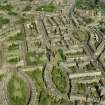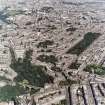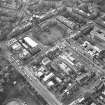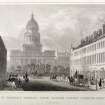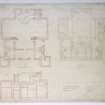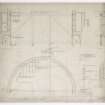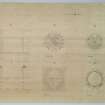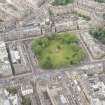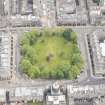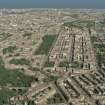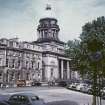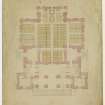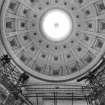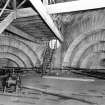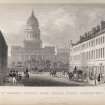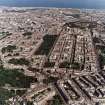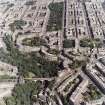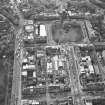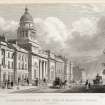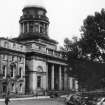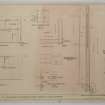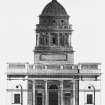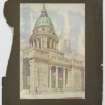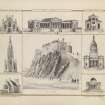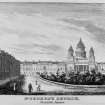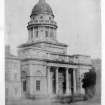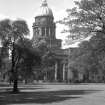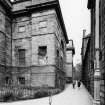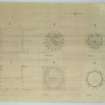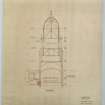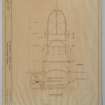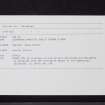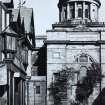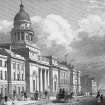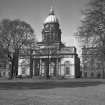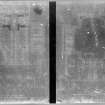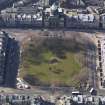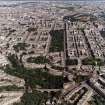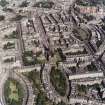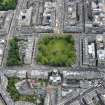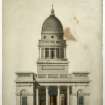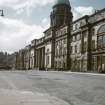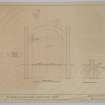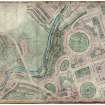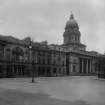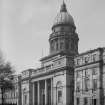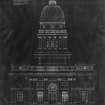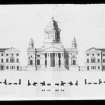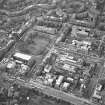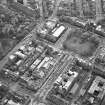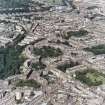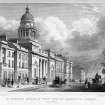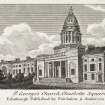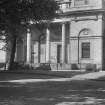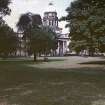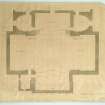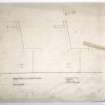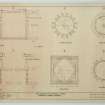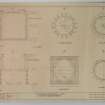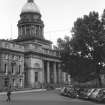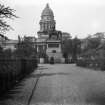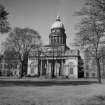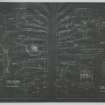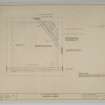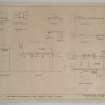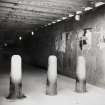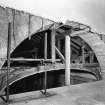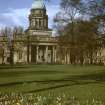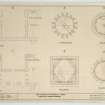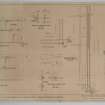Pricing Change
New pricing for orders of material from this site will come into place shortly. Charges for supply of digital images, digitisation on demand, prints and licensing will be altered.
Edinburgh, Charlotte Square, St George's Parish Church
Church (19th Century), Office (20th Century), War Memorial (20th Century)
Site Name Edinburgh, Charlotte Square, St George's Parish Church
Classification Church (19th Century), Office (20th Century), War Memorial (20th Century)
Alternative Name(s) New Church; West Register House; National Archives Of Scotland; War Memorial Doorcase
Canmore ID 52590
Site Number NT27SW 122
NGR NT 24578 73835
Datum OSGB36 - NGR
Permalink http://canmore.org.uk/site/52590
- Council Edinburgh, City Of
- Parish Edinburgh (Edinburgh, City Of)
- Former Region Lothian
- Former District City Of Edinburgh
- Former County Midlothian
NT27SW 122 24578 73835
Architect: Robert Reid, 1811-1814.
Robert Adam had made plans for the church but they were not carried out.
REFERENCE
Dick Peddie & MacKay, Edinburgh
Dick Peddie & McKay - repairs - Attic 2, Bin 24, Bag 2 - 1960-1
SRO
Letter from John Dalrymple Murray to his father Lt. Col. John Murray. 'The new Church in Charlotte Square is now nearly finished, the dome is almost done and the seats are put in on one side. It has 2 rows of galleries like the West Church and is to contain 1500 people. The chapel has been painted anew'
1813
GD219/301/2
Letter from John Dalrymple Murray to his father Lt. Col. John Murray. 'The New Church was oped this day by Sir Harry Moncrieff. The Concourse of People was immense, all the front part of Charlotte Square was filled with them. The Galleries are covered with red and all the doors are the same colour inside. The pulpit is of mahogany, most beautifully carved.'
1814
GD219/301/5
(Undated) information in NMRS.
Publication Account (1951)
124. St. George's Church, Charlotte Square.
In order to close in the George Street vista, Craig, in his plan for the New Town, reserved the central site on the W. side of Charlotte Square for a church. The first design for the building was prepared by Robert Adam, but this was rejected on the score of expense in favour of another and more monumental one by Robert Reid, which was carried out between 1811 and 1814 at a cost of £33,000. Most of this sum was spent on the façade and its superstructure, the body of the church behind being comparatively small and plain. Both designs are illustrated in the Scots Magazine and Edinburgh Literary Miscellany of I April, 1814.
On plan the building resembles a Greek cross standing on a step, the cross accommodating the church proper and the step its portico. The masonry is all of freestone from Craigleith quarry. The portico is constructed of polished ashlar. Massive inform and bold in detail, it contrasts with the lighter architecture of the neighbouring houses which Adam designed, Reid having evidently set his scale by the Square as a whole and not by anyone of its constituents. The portico has a pier on either side flanking a lofty colonnade of four Ionic columns seton a podium of eight shallow steps, and the whole is surmounted by a continuous cornice and plain frieze, the latter bearing a panel above either pier. Above the cornice there are pediments with fluted panels over the piers and a balustrade over the colonnade. Behind the balustrade rises a tower of droved ashlar, the lower part of which is square and bears a panel while the upper part is circular and constructed in two stages, the first enriched with Corinthian columns, the second a drum. From the cornice of this drum rises a coffered dome of copper supporting a small, gilt "temple," also domed and bearing a cross at the apex, about 150 ft. from the ground. The piers of the portico return on the sides of the building. Apart from these returns both sides and the back of the building are of droved ashlar, with an almost entire absence of moulding.
Within the portico are three doorways, the one in the centre very lofty, with a graceful fanlight in its semicircular head. At either end of the porch is a niche. These doors give admission to a pillared entrance-hall which has a staircase at each end and three doorways on the W. The central doorway, reconstituted as a memorial to parishioners who fell in the war of 1914-1918, opens directly into the central aisle of the church, while those on each side admit to vestibules from which respectively the N. and S. cross-aisles are entered. As has already been said, the body of the church is shaped like a Greek cross, and at the intersection of the limbs of the cross there are sturdy piers spanned by segmental, coffered arches and supporting a flat, coffered dome with a circular light in the centre. This roundel, supplemented by three-light windows in the N., S. and E. arms, lights the interior. There are galleries in the N., S. and E. arms, while most of the W. arm is occupied by the pulpit, Communion table and organ. The whole area is seated. Most of the finishings seem to be modern, but the doors that admit to the body of the church are probably original.
RCAHMS 1951, visited c.1941
Photographic Survey (August 1964 - November 1964)
Photographic survey by the Ministry of Works in 1964.
Photographic Survey (November 1964)
Photographs by the Scottish National Buildings Record/Ministry of Work in November 1964.





























































































